The following books have deeply impacted our own growth and development, as well as those of many of our clients. We highly recommend these books and incorporate many of their ideas into our work.
Do you have a favorite book that is not in this list? Please tell us about it and how it has impacted you.
 Tribal Leadership: Leveraging Natural Groups to Build a Thriving Organization
Tribal Leadership: Leveraging Natural Groups to Build a Thriving Organization
This is one of the most important books that we’ve read in the last few years. We consider this book to be required reading for leaders in organizations, especially senior executives who want to transform their work culture from merely “functional” or “adequate” to “extraordinary.” The authors of Tribal Leadership present a five-stage model for describing the culture and sub-cultures (tribes) of an organization. It is based on over 24,000 case studies and a decade of research. After reading this book, you will be able to recognize the Tribal Stage within your organization simply by noticing how most people talk and how most people structure their work relationships. The book then outlines proven methods for helping a tribe move from one stage to the next. As a result, it is not uncommon for an organization to see increases in Key Performance Indices in the 300-500% range. Particularly noteworthy is the book’s discussion on approaches (e.g. team building, motivational speeches, discussions of core values, etc.) that don’t work at certain cultural stages and are therefore a waste of time and money. Also, the chapter on strategy is worth the weight of the book in gold. A free audio version of this book can be found here.
Check out our blog post on Tribal Leadership!
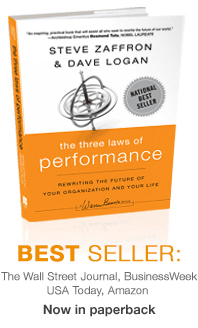 The Three Laws of Performance: Rewriting the Future of Your Organization and Your Life
The Three Laws of Performance: Rewriting the Future of Your Organization and Your Life
This book is described as a proven system for rallying all of an organizations’ employees around a new vision and ideas for making the vision stick. Frankly we believe it is so much more, a sort of “Rosetta stone” for personal and organizational empowerment and creating visionary futures. We believe it will be one of the single most influential books you will ever read.
To quote the authors, “the two biggest issues we hear from leaders are lack of buy-in and an absence in ownership… The Three Laws of Performance can help with both problems by encouraging leaders to see that people’s actions are correlated to how situations occur to them. The second and third laws, taken together, say that future-based language—such as declarations, promises, and commitments—transform how situations occur to people. By focusing on the way in which things are “ occurring to the people, their actions naturally shift.”
They go on to say that “organizations are going through a shift for a variety of reasons, perhaps most importantly the ability to connect with other people. Years ago, companies could hide activities, especially in the developing world. Today, these activities are captured by cell phones and shared on social media. There’s really no place to hide anymore. As a result, organizations need to transform adversarial relationships with governments, local populations, unions, and communities, into partnerships. Doing so requires really grasping why people do what they do. We believe the Three Laws of Performance gives leaders a unique insight into how to make this shift in a way that inspires greater levels of satisfaction, results, and the experience of making a difference.”
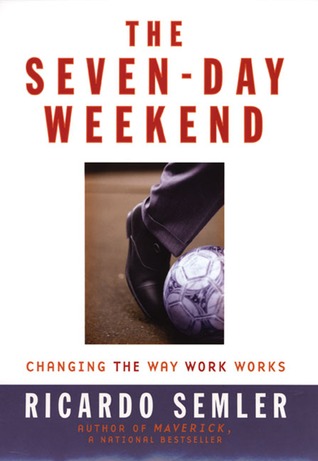 The Seven-Day Weekend: Changing the Way Work Works
The Seven-Day Weekend: Changing the Way Work Works
Ricardo Semler, the Brazil-based CEO of Semco, believes corporations and employees can become successful by bucking tradition and thinking wildly outside the box. He took over the company at the age of 20, with the premise that you can give up control to the people and ask them to act like adults, the way they act when they are not at work. Sounds crazy, but Semco’s success has been studied by business schools throughout the world. Semler attempts to explain Semco’s success (a company with $212 million in annual revenue and “no official structure… no organizational chart… no business plan or company strategy”) and how its principles can be applied in other companies to make working environments more appealing and opportunities for growth and achievement limitless. Nine chapters (one for each day of the week, as well as one for “Any Day” and one for “Every Day”) explore the ways in which the traditional workweek stifles creativity and fosters distaste for working days. But Semler also looks at how to shake things up. The Wednesday chapter leads off with the following to-do list: attend a board of director’s meeting, dump a deal rather than pay a bribe, and tell the company it sucks. While Semler’s ideas often seem counter-intuitive, the point is not to provide specific guidelines but rather to encourage readers to view their organization and professional lives in a new way. Initially we felt the book’s premise was promising, but the actual steps to achieve a seven-day weekend seemed elusive. That is, however, until we came across the book Tribal Leadership…
People keep asking “How?” as a defense against living their life, says best-selling author Peter Block. The “how questions” are deflections from focusing on our commitments, which Block contends are the true sources of our freedom. Freedom, he goes on to add, is often confused with autonomy. In this witty, insightful award-winning book, Block shows that many standard solutions and improvement efforts, reinforced by most of the literature, keep people paralyzed. Here he places the “how to” craze in perspective and teaches individuals, workers, and managers ways to act on what they know. This in turn allows them to reclaim their freedom and capacity to create the kind of world they want to live in. Block’s “elements of choice” – the characteristic of a new workplace and a new world based on more positive values – include self-mentoring, investing in relationships, accepting the unpredictability of life, and realizing that the individual prospers only when the community does.
Kim and Mauborgne’s blue ocean metaphor elegantly summarizes their vision of the kind of expanding, competitor-free markets that innovative companies can navigate. Unlike “red oceans,” which are well-explored and crowded with competitors, “blue oceans” represent “untapped market space” and the “opportunity for highly profitable growth.” The only reason more big companies don’t set sail for them, they suggest, is that “the dominant focus of strategy work over the past twenty-five years has been on competition-based red ocean strategies” — i.e., finding new ways to cut costs and grow revenue by taking away market share from the competition. With this groundbreaking book, Kim and Mauborgne — both professors at France’s INSEAD, the second largest business school in the world — aim to repair that bias. Using dozens of examples — from Southwest Airlines and Cirque du Soleil to Curves and Starbucks — they present the tools and frameworks they’ve developed specifically for the task of analyzing blue oceans. They urge companies to shift to “value innovation” that focuses on “utility, price, and cost positions,” to “create and capture new demand” and to “focus on the big picture, not the numbers.” And while their heavyweight analytical tools may be of real use only to serious strategy planners, their overall vision will inspire entrepreneurs of all stripes, and most of their ideas are presented in a direct, jargon-free manner. Theirs is not the typical business management book’s vague call to action; it is a precise, actionable plan for changing the way companies do business with one resounding piece of advice: swim for open waters.
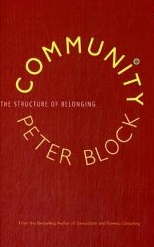 Community:The Structure For Belonging
Community:The Structure For Belonging
Modern society is plagued by fragmentation. The various sectors of our communities – businesses, schools, social service organizations, churches, government – do not work together. They exist in their own worlds. As do so many individual citizens who long for connection but end up marginalized, their gifts overlooked and their potential contributions lost. This disconnection and detachment makes it hard if not impossible to envision a common future and work towards it together. We know what healthy communities look like – there are many success stories out there, and they’ve been described in detail. What Block provides in this inspiring new book is an exploration of the exact way community can emerge from fragmentation: How is community built? How does the transformation occur? What fundamental shifts are involved? Change is not something you get people to buy into, but rather it’s a “self-inflicted wound” that is taken on by choice. Block provides an architecture for this process, including six specific conversations that people need to engage in before they can wholeheartedly choose a future distinct from the past. He explores a way of thinking about our places and spaces that further creates an opening for authentic communities to emerge and details what each of us can do to make that happen.
Our first foray into the connection between poetry, the arts and effective leadership happened as we experienced poet David Whyte during his keynote to the International Coach Federation in 1999. Even the silences between his words were palpable and his immersion into what makes us deeply human made an obvious connection for us with what makes for great leadership. Jim Kouzes, who is coauthor of the bestselling The Leadership Challenge and A Leader’s Legacy, says: “Leading from Within is perhaps the most soulful treatment of leadership ever composed. Leadership is first an inner quest, and there is absolutely no better place to explore your inner territory than in the pages of this book. This is an evocative work of art; do yourself an immense favor, and engage with these amazing and diverse leaders and their poems.” If leadership is about connection with the common yearnings of those being led, then Leading From Within is a peek into that process.
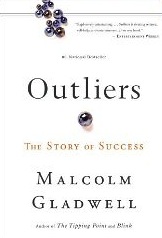 Outliers: The Story of Success
Outliers: The Story of Success
Outliers can be enjoyed for its bits of trivia, like why most pro hockey players were born in January, how many hours of practice it takes to master a skill, why the descendants of Jewish immigrant garment workers became the most powerful lawyers in New York, how pilots’ cultures impact their crash records, how a centuries-old culture of rice farming explains Asian immigrants’ work ethic. But there’s more to it than that. Throughout all of these examples–and in more that delve into the social benefits of lighter skin color and the reasons for school achievement gaps – Gladwell invites conversations about the complex ways privilege manifests in our culture. He leaves us pondering the gifts of our own history, and how the world could benefit if more of our kids were granted the opportunities to fulfill their remarkable potential.
The research is clearer than we suspect on what actually correlates with happiness. Yet from the vantage point of a consumer-based economy one would need to stumble upon happiness, given the forces at play. So while the secret to happiness is supported by reams of research, the choice to be happy still feels like swimming against the tide. Why are lovers quicker to forgive their partners for infidelity than for leaving dirty dishes in the sink? Why will sighted people pay more to avoid going blind than blind people will pay to regain their sight? Why do dining companions insist on ordering different meals instead of getting what they really want? Why do patients remember long medical procedures as being less painful than short ones? Why do home sellers demand prices they wouldn’t dream of paying if they were home buyers? Why are shoppers happier when they can’t get refunds? Why do pigeons seem to have such excellent aim? Why can’t we remember one song while listening to another? Why does the line at the grocery store always slow down the moment we join it?
In this brilliant, witty, and accessible book, renowned Harvard psychologist Daniel Gilbert describes the foibles of imagination and illusions of foresight that cause each of us to misconceive our tomorrows and misestimate our satisfactions. Vividly bringing to life the latest scientific research in psychology, cognitive neuroscience, philosophy, and behavioral economics, Gilbert reveals what scientists have discovered about the uniquely human ability to imagine the future, and about our capacity to predict how much we will like it when we get there. With penetrating insight and sparkling prose, Gilbert explains why we seem to know so little about the hearts and minds of the people we are about to become.
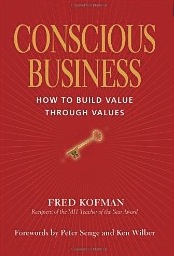 Conscious Business: How to Build Value Through Values
Conscious Business: How to Build Value Through Values
More and more business leaders are catching on to an often-overlooked fact: consciousness is our basic faculty for survival and success. Without it, we forget what’s important to us and lose sight of the steps we might take to reach those goals. Conscious business, explains Fred Kofman, means shining this awareness on every area of your work: in recognizing the needs of others and expressing your own, in seeing the hidden emotional obstacles that may be holding your team back, in making good decisions under pressure, and even in delving into such “spiritual” questions as “Who am I?” and “What is my real purpose here?” In Conscious Business, this visionary teacher and consultant to Google, Microsoft, Yahoo! and other leading companies presents the complete training manual in the breakthrough techniques he has shared with over 20,000 executives on four continents.
Conscious Business inspired our own work after we did a weeklong training with Fred Kofman, himself, in 2003. It has also inspired a conscious business movement that is finally gaining traction, and may very well be our hope for a better future, globally.
StrengthsFinder 2.0 by Tom Rath
The people at Gallup have noted that in many industrialized countries – especially in the United States – we devote more time to fixing our shortcomings than to developing our strengths. Tom Rath suggests that indiscriminately working on weaknesses is a waste of time and a misuse of organizational resources. To help you uncover your talents, Gallup’s updated online assessment, StrengthsFinder 2.0, will help you to discover your top five talents.
A strength is defined as a “consistent, near-perfect performance in an activity.” As our brain grows and develops since childhood, it specializes in ways we would describe as innate abilities and talents. When we take a talent and augment it with knowledge and skills, we arrive at a strength. Thus, Strengths = Talents + Knowledge + Skills. Notice the following key point from the above equation: developing a strength is nearly impossible unless there’s an underlying talent beneath it.
We suggest that you take the online StrengthsFinder assessment that comes with the book. You can now name, acknowledge, and more fully appreciate those innate abilities that you may have been taking for granted and give greater attention to strengthening your strengths (as opposed to merely improving on weaknesses). When you catch yourself “efforting,” procrastinating, or suffering about a task, chances are that it’s not aligned with one or more strengths. Consider reassigning the task to (or seeking help from) someone with the requisite strengths. It’s much easier to form a team whose members have the necessary strengths to achieve its mission then for one person to do it all.
We at MasterCoaches, and many of our clients, have found David Allen’s work to be invaluable, even if you only cherry pick some of his system to integrate into your own. In today’s world, yesterday’s methods just aren’t sufficient. In Getting Things Done, veteran coach and management consultant David Allen shares the breakthrough methods for stress-free performance that he has introduced to tens of thousands of people across the country. Allen’s premise is simple: our productivity is directly proportional to our ability to relax. Only when our minds are clear and our thoughts are organized can we achieve effective productivity and unleash our creative potential. InGetting Things Done Allen shows how to:
* Apply the “do it, delegate it, defer it, drop it” rule to get your in-box to empty
* Reassess goals and stay focused in changing situations
* Plan projects as well as get them unstuck
* Overcome feelings of confusion, anxiety, and being overwhelmed
* Feel fine about what you’re not doing
From core principles to proven tricks, Getting Things Done can transform the way you work, showing you how to pick up the pace without wearing yourself down.
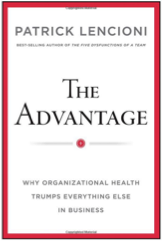 The Advantage: Why Organizational Health Trumps Everything Else In Business.
The Advantage: Why Organizational Health Trumps Everything Else In Business.
We are big fans of Patrick Lencioni, having read many of his books and recommended them to countless clients. The Advantage is the first book not written in a fable format, yet it incorporates many of the powerful teachings of his prior books. From the Amazon website:
“In his immensely readable and accessible style, Lencioni makes the case that there is no better way to achieve profound improvement in an organization than by attacking the root causes of dysfunction, politics, and confusion. While too many leaders are still limiting their search for advantage to conventional and largely exhausted areas like marketing, strategy, and technology, Lencioni demonstrates that there is an untapped gold mine sitting right beneath them. Instead of trying to become smarter, he asserts that leaders and organizations need to shift their focus to becoming healthier, allowing them to tap into the more-than-sufficient intelligence and expertise they already have.”
Please check out our review of this book at this link.


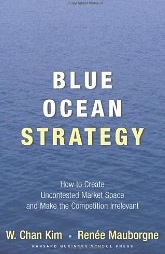

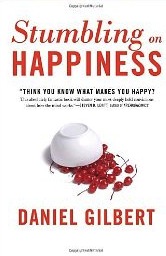
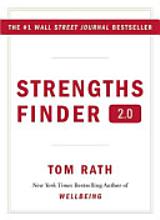
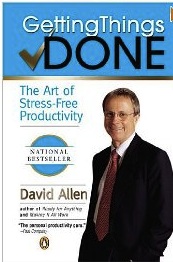
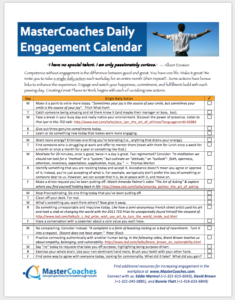
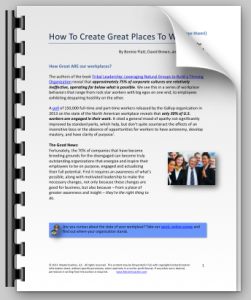
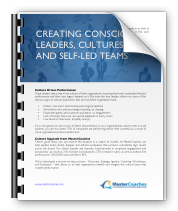
Social Links